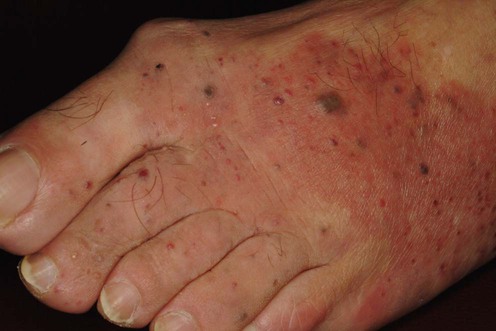Mosam A, Shaik F, Uldrick TS, Esterhuizen T, Friedland GH, Scadden DT, et al. JAIDS 2012; 60: 150–7.
Kaposi sarcoma

First-line therapies
A randomized controlled trial of highly active antiretroviral therapy versus highly active antiretroviral therapy and chemotherapy in therapy-naive patients with HIV-associated Kaposi sarcoma in South Africa.
Randomized trial of paclitaxel versus pegylated liposomal doxorubicin for advanced human immunodeficiency virus-associated Kaposi sarcoma.
![]()
Stay updated, free articles. Join our Telegram channel

Full access? Get Clinical Tree







 Pegylated liposomal doxorubicin
Pegylated liposomal doxorubicin Paclitaxel
Paclitaxel Antiretroviral therapy
Antiretroviral therapy Cryotherapy
Cryotherapy Radiotherapy
Radiotherapy Alitretinoin gel
Alitretinoin gel